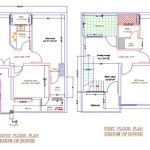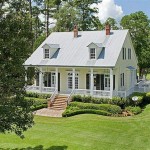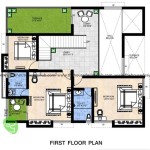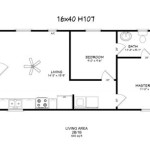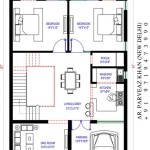Outdoor Cat Tree House Plans: A Comprehensive Guide
Outdoor cat tree houses offer enrichment for feline companions, providing a safe and stimulating environment for exploration, relaxation, and exercise. Unlike indoor cat furniture, outdoor cat trees are designed to withstand the elements and offer a unique connection with nature. Planning and constructing a durable and engaging outdoor cat tree house requires careful consideration of various factors, including materials, design, safety, and environmental integration.
Key Considerations Before Beginning Construction
Before embarking on the construction of an outdoor cat tree house, several critical factors must be addressed. These factors will influence the overall design, material selection, and ultimately, the safety and longevity of the structure. Thorough planning is essential to ensure the final result meets the needs of the cats and complements the outdoor environment.
The first consideration should be the number and size of the cats who will be using the tree house. Smaller cats can navigate tighter spaces and lower platforms, while larger breeds require more substantial structures with wider platforms and secure climbing routes. The overall weight-bearing capacity of the tree house must be calculated to accommodate multiple cats simultaneously.
The available space in the outdoor area will dictate the size and complexity of the cat tree house. Measure the designated area and sketch out potential designs considering height, width, and depth. Ensure the location allows for adequate sunlight exposure without overheating the structure. Consider existing landscaping elements, such as trees and shrubs, which can be incorporated into the design.
The climate of the region is a significant factor in material selection and design. In areas with heavy rainfall or snow, using weather-resistant materials like treated lumber, cedar, or composite decking is crucial. Consider designing a roof or sheltered areas to protect the cats from the elements. In hot climates, providing shaded areas and proper ventilation is essential to prevent overheating. The design should also consider potential wind loads, ensuring the structure is securely anchored to the ground.
Budgetary constraints will influence the materials chosen and the complexity of the design. Research the cost of different materials and compare prices from various suppliers. Consider repurposing existing materials, such as reclaimed wood or old pallets, to reduce expenses. Prioritize safety and durability, even if it means scaling back on some of the more elaborate design features.
Finally, assess the cats' individual preferences and behaviors. Some cats prefer high vantage points, while others enjoy enclosed spaces for napping. Incorporate elements that cater to these preferences, such as perches, platforms, tunnels, and scratching posts. Observe the cats' climbing and jumping habits to determine the optimal spacing between platforms and the appropriate height for perches.
Material Selection and Construction Techniques
The selection of appropriate materials and the employment of sound construction techniques are paramount to creating a safe, durable, and aesthetically pleasing outdoor cat tree house. Choosing materials that can withstand the elements and employing construction methods that ensure structural integrity are crucial for the longevity of the structure.
Treated lumber is a common choice for the frame and support structure due to its resistance to rot, decay, and insect infestation. Ensure the lumber is treated with a pet-safe preservative. Cedar is another excellent option due to its natural resistance to decay and insect damage. It is a more expensive option than treated lumber, but its durability and aesthetic appeal make it a worthwhile investment.
Composite decking, made from recycled plastic and wood fibers, is a durable and low-maintenance option for platforms and walkways. It is resistant to moisture, fading, and splintering, making it a safe and comfortable surface for cats to walk and lounge on. Pressure-treated plywood can also be used for platforms, but it must be sealed with a pet-safe sealant to prevent moisture damage.
Consider using sisal rope for scratching posts and climbing surfaces. Sisal is a natural fiber that is durable and provides a good texture for cats to scratch. Avoid using synthetic ropes, as they can be harmful if ingested. Heavy-duty outdoor fabric can be used for cushions and bedding. Choose fabrics that are resistant to moisture, fading, and mildew. Ensure the fabric is securely attached to the platforms to prevent it from being torn or chewed.
Use galvanized screws and nails to assemble the structure. Galvanized fasteners are resistant to rust and corrosion, ensuring the connections remain strong and secure over time. Apply a pet-safe wood sealant to all exposed wood surfaces to protect them from moisture damage. Consider using a non-toxic paint or stain to enhance the appearance of the cat tree house.
When constructing the cat tree house, ensure all connections are strong and secure. Use proper joinery techniques, such as mortise and tenon joints or dovetail joints, to create durable connections. Reinforce critical areas with metal brackets or straps. Regularly inspect the structure for any signs of wear or damage and make necessary repairs promptly. This will help ensure the safety and longevity of the cat tree house.
The base of the cat tree house must be stable and secure. If the tree house is tall, consider anchoring it to the ground with concrete footings or metal stakes. This will prevent the structure from tipping over in strong winds. Ensure the base is level to prevent the tree house from wobbling. Consider adding a ramp or steps to the base of the tree house to make it easier for cats to access the upper levels.
Design Considerations for Cat Enrichment and Safety
Designing an outdoor cat tree house that prioritizes both enrichment and safety is crucial for the well-being of feline companions. The design should cater to the cats' natural instincts and provide opportunities for exercise, exploration, and relaxation, while simultaneously minimizing potential hazards.
Incorporate multiple levels and platforms at varying heights to provide cats with different vantage points. Cats enjoy climbing and observing their surroundings from elevated positions. Ensure the platforms are wide enough for cats to comfortably turn around and lounge. Consider adding enclosed spaces, such as tunnels or cozy hideaways, for cats who prefer privacy and security.
Include scratching posts in the design to satisfy the cats' natural urge to scratch. Scratching helps cats groom their claws, mark their territory, and relieve stress. Place scratching posts in prominent locations where cats are likely to use them. Use a variety of materials for scratching posts, such as sisal rope, carpet, or wood.
Provide opportunities for play and exercise by incorporating toys and interactive elements into the design. Hang toys from platforms or branches, or create a climbing wall with strategically placed steps and handholds. Consider adding a tunnel or enclosed walkway to encourage exploration and movement.
Safety is paramount when designing an outdoor cat tree house. Ensure all surfaces are smooth and free of splinters or sharp edges. Avoid using materials that can be easily chewed or ingested. Use non-toxic finishes and sealants. Ensure all connections are strong and secure to prevent the structure from collapsing.
The spacing between platforms and climbing routes should be appropriate for the size and agility of the cats. Avoid creating gaps or spaces where cats could get their paws or heads stuck. Consider adding netting or mesh to enclose the structure and prevent cats from falling or escaping. This is especially important if the cat tree house is located near a busy road or other hazards.
Protect the cats from the elements by providing shaded areas and shelter from rain and wind. Incorporate a roof or awning to provide shade from the sun. Consider adding insulated panels to the walls of enclosed spaces to provide warmth in cold weather. Ensure the structure is well-ventilated to prevent overheating in hot weather.
Regularly inspect the cat tree house for any signs of wear or damage. Replace worn or damaged parts promptly. Clean the structure regularly to remove dirt, debris, and parasites. Provide fresh water and food in the cat tree house to encourage cats to use it. With careful planning and execution, an outdoor cat tree house can provide feline companions with a safe, stimulating, and enriching environment for years to come.

30 Best Diy Outdoor Cat House Plans Shelter

15 Best Outdoor Cat Tree Ideas And Plans Diy House

15 Best Outdoor Cat Tree Ideas And Plans House

Ultimate Diy Cat Condo Lazy Guy

15 Diy Outdoor Cat House Plans For Feline Shelter

Pawhut Feral Cat House Outdoor Kitten Condo W Asphalt Roof Escape Door Com

Cat Condo 4 Foot Wide 2 Deep 7 Feet Tall Houses And 6 Platforms Tree Plans Diy

Outdoor Freestyle Cat Tree Omlet Appletons

Pawhut Wooden Outdoor Cat House 3 Tier Kitten Shelter W Tilted Roof Grey

Super Stylish Cat Houses Furniture Home Essentials For The Discerning Lover


